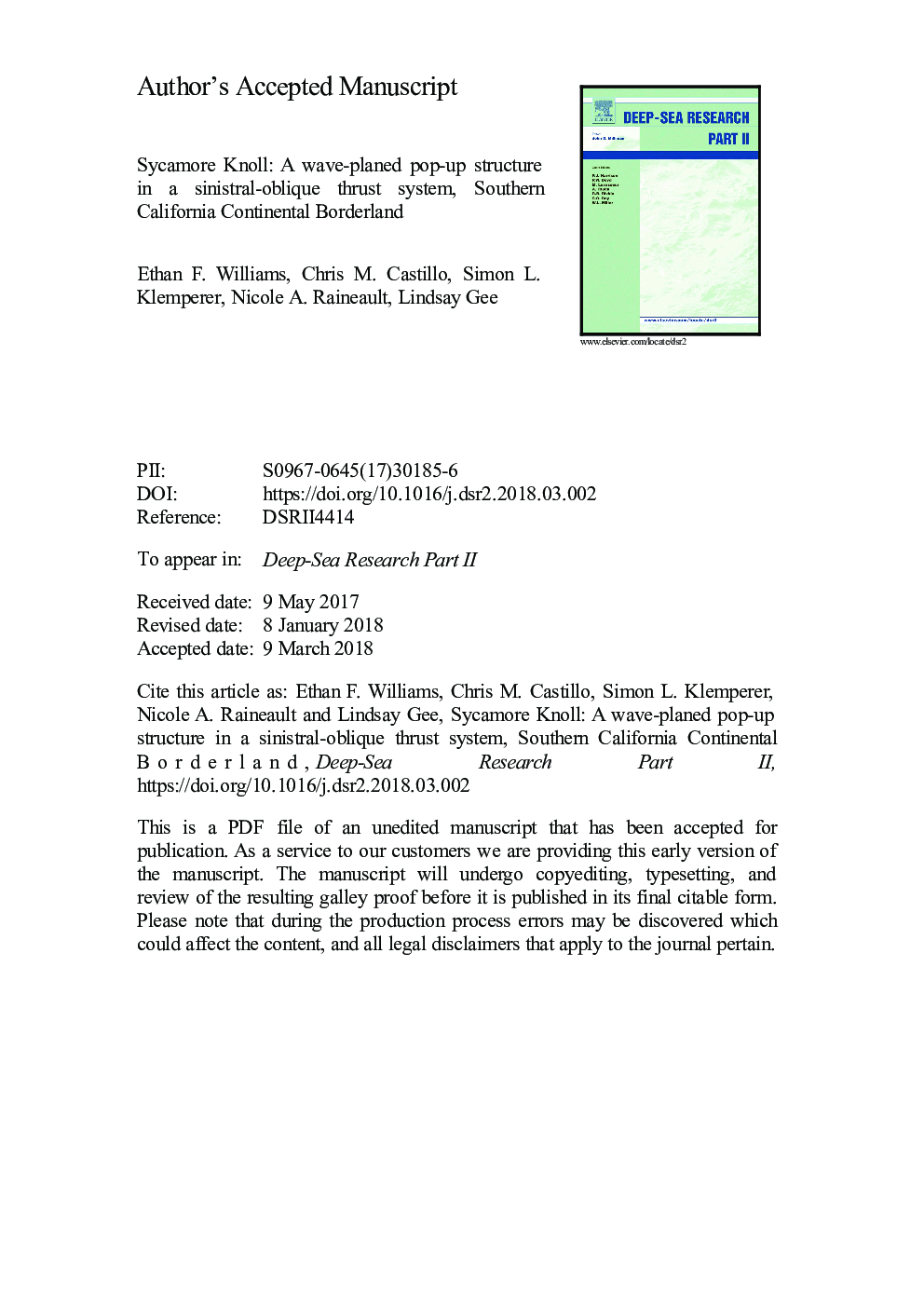| Article ID | Journal | Published Year | Pages | File Type |
|---|---|---|---|---|
| 8884366 | Deep Sea Research Part II: Topical Studies in Oceanography | 2018 | 51 Pages |
Abstract
At the boundary between the Western Transverse Ranges province and Inner Continental Borderland of Southern California, strain is partitioned across the sinistral-oblique Anacapa-Dume Fault system. Sycamore Knoll, a pop-up structure 20â¯km west of Point Dume in the hanging wall of the north-dipping Anacapa-Dume Fault, stands out as an anomalous bathymetric high along the Southern California coast. We synthesize new and existing geophysical datasets, including multibeam bathymetry/backscatter and single/multichannel seismic, to understand the morphology and tectonic implications of Sycamore Knoll. We identify a complete eustatic low-stand submerged marine-terrace package encircling Sycamore Knoll platform that corresponds to the Last Glacial Maximum (LGM). The marine-terrace deposits and wave-planed surface of Sycamore Knoll require a late Quaternary uplift rate of 0.55 (+0.5/â0.3) mm/yr relative to sea-level. By combining our uplift rate with previous estimates of basin subsidence and a revised structural model of the Anacapa-Dume Fault, we determine a maximum slip rate in latest Quaternary time of 1.50 (+0.5/â0.3) mm/yr and hence a post-LGM rate of convergence across the Anacapa-Dume Fault of 0.60 (+0.2/â0.1) mm/yr.
Keywords
Related Topics
Physical Sciences and Engineering
Earth and Planetary Sciences
Geology
Authors
Ethan F. Williams, Chris M. Castillo, Simon L. Klemperer, Nicole A. Raineault, Lindsay Gee,
